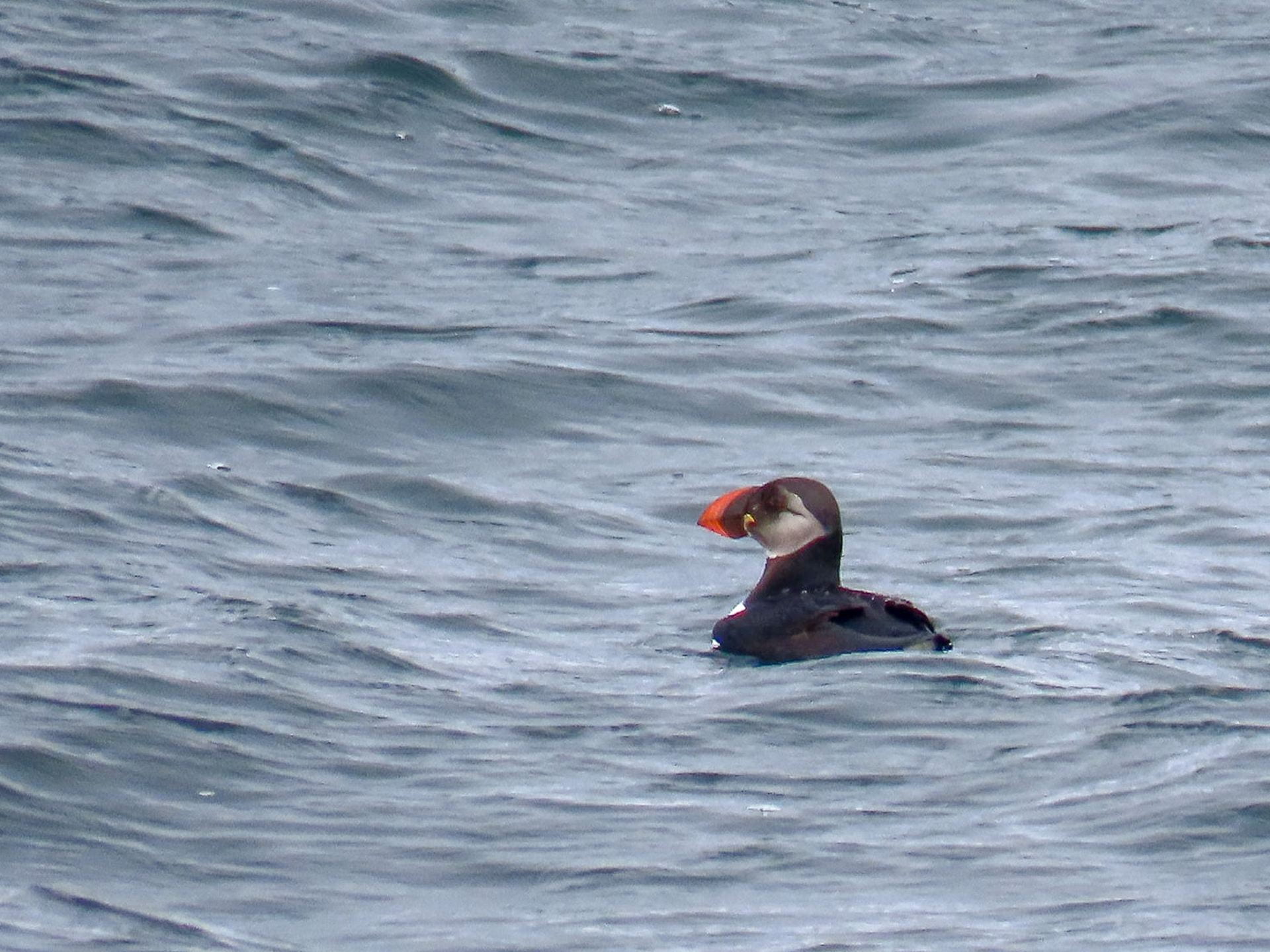
Name: Elias Markee-Ratner
Social Justice Group: Climate Change: Rising Sea Levels / Plastic Pollution
Date of Fieldwork: January 27, 2024
Name of Organization and person (people) with whom you met and their title(s):American Princess Cruises & the New York State Young Birders Club
Type of Fieldwork: Pelagic Birding Trip
What I did and what I learned about my topic, activism, social justice work or civil and human rights work from this fieldwork?:
While the ocean may seem like an inhospitable place for avian life, the truth is that over 300 species of birds call it home. For them, ending up on land is like a human getting stranded in the ocean. Therefore, the only time they visit terra firma is to breed.
So for birders, the best chance to find seabirds is to head offshore on ‘pelagic’ trips, which are targeted at birders but can be amazing opportunities to see a variety of marine life besides birds. And that’s how I found myself standing on a dock in Sheepshead Bay (in Brooklyn) at 5:30 am along with 30+ other birders, waiting to board the American Princess and head over 50 miles from shore to find what New York’s waters have to offer.
Once we were off, it took a little while to get light enough to spot birds. But once it was, we quickly spotted a pair of Dovekies two miles off of the Rockaways. These birds max out at just eight inches long and sit on the surface of the water, diving under in search of plankton. They nest in the Arctic on cliffs and spend the winter as far south as North Carolina. We were all shocked by this sighting because Dovekies are typically found in waters 25+ miles from shore and prefer water temperatures of 45-50 degrees Fahrenheit. We were 23 miles closer to shore than expected, and the water was just 42 degrees.
This trend continued throughout the day, as we kept spotting Dovekies from that moment onward. When we were 15 miles from shore, we spotted an Atlantic Puffin. This adorable seabird is related to Dovekies and is famous for its clownish looks and habits. However, few people know that they can be found in New York’s waters. But, like the Dovekies, something was wrong: puffins are found more than 40 miles from shore and have similar temperature preferences to Dovekies. Once again, the water was too cold and we were too close to land. And this puffin wasn’t a one-off: we continued to see them for the rest of the trip up until we saw one 17 miles offshore on our way back.
Just moments after we saw our first puffin of the trip, we spotted a couple Common Murres. These are also related to puffins and Dovekies, but are more expected so close to shore (they’re most common 20-30 miles from and). However, on our way back to shore, we also spotted one just 10 miles off of Long Beach, which is closer than expected. Clearly, we were having an odd trip.
But things only got stranger when we made it to the area in which Dovekies are expected: 30+ miles from shore. While Dovekies had been common for most of the trip up until that point, they became quite scarce, despite the water temperature being perfect for them.
So the question is: why were all of the birds in the wrong places? The truth is that we don’t know. While this could have something to do with a recent cold snap, seabirds are incredibly tough and this doesn’t seem to tell the full story (especially because a pelagic trip last year also encountered Dovekies and Atlantic Puffins closer to shore than normal). And while warming oceans is a possibility, the waters in which we encountered Dovekies and puffins were often too cold for them. It seems that they were being pushed into marginal habitat because of diminished food supply.
But that still leaves the question of why there was a shortage of food. And once again, we don’t really know why. This could relate to warming oceans or changing conditions, but it could also relate to marine pollution or another issue. It’s an interesting situation that requires much more research to fully understand.
By this point, you may be wondering why I am talking about birds for a project about social justice. Just like how marine pollution and climate change are linked, our fates are linked with those of animals. These seabirds eat some of the same foods as we do and we both rely on these ecosystems, for food and for our livelihoods. They can be indicators of collapsing ocean ecosystems that will also harm us. In addition, puffins and Dovekies are vital to certain communities as tourism attractions and food sources. What happens here will affect those communities, even if they are hundreds or thousands of miles north of here.
In addition to birds, I also took photos of any marine pollution we encountered, including plastic bags and even a balloon with lego patterning.
All in all, the trip was amazing: along with the birds I mentioned, we saw a lot more ocean-dwelling avian life and even a couple Gray Seals, as well as a Humpback Whale. It was an eye-opening experience that taught me a lot about the importance of marine ecosystems and their plight.